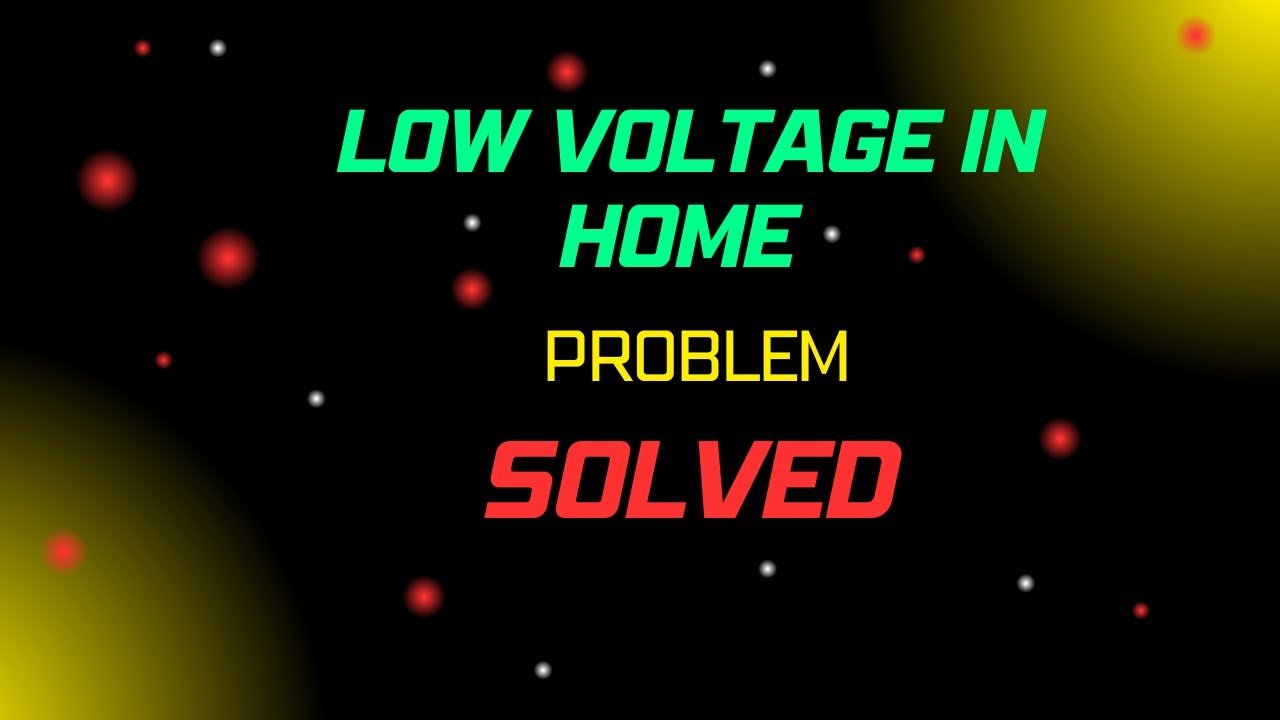Solving low voltage problems in your home is crucial for ensuring the smooth operation of your electrical devices. One common cause of low voltage is overloaded circuits. By redistributing the load or upgrading your electrical panel, you can effectively tackle this issue. Another potential culprit could be faulty wiring or connections, which can be resolved by hiring a professional electrician to inspect and repair any issues. Addressing these issues promptly will help you maintain a safe and functional electrical system in your home.
How to Solve Low Voltage Problem in Home
Welcome to our comprehensive guide on solving low voltage problems in your home. If you’ve been experiencing issues with dim lights, slow appliances, or frequent electrical disruptions, you may be dealing with a low voltage problem. But fret not, as we are here to help you understand the causes of low voltage and provide practical solutions to address this common household issue.
Understanding the Causes of Low Voltage
Low voltage in your home can be caused by various factors, ranging from issues with your electrical system to external factors beyond your control. One common cause of low voltage is overloaded circuits. When you have too many devices drawing power from a single circuit, it can lead to voltage drops and affect the overall performance of your electrical system. Other causes include faulty wiring, issues with the power grid, and outdated electrical panels.
Conducting a Voltage Test
Before diving into solutions, it’s essential to confirm that you are indeed dealing with a low voltage problem. You can do this by conducting a voltage test using a multimeter. Simply plug the multimeter into a power outlet and measure the voltage. A standard voltage reading for most homes should be around 120 volts. If your reading is significantly lower than this, you likely have a low voltage issue that needs to be addressed.
DIY Solutions for Low Voltage Problems
If you’re experiencing low voltage in your home, there are several DIY solutions you can try before calling in a professional electrician. One simple fix is to unplug any unnecessary devices and appliances to reduce the load on your electrical system. You can also try resetting your circuit breaker or replacing any blown fuses to see if that helps restore normal voltage levels.
Inspecting Your Electrical Wiring
Another common cause of low voltage is faulty wiring. Over time, wiring can become worn out or damaged, leading to voltage drops. Inspect your electrical wiring for any signs of wear, fraying, or damage. If you notice any issues, it’s crucial to address them promptly to avoid potential safety hazards and restore normal voltage levels in your home.
Upgrading Your Electrical Panel
If you live in an older home with an outdated electrical panel, it might be time for an upgrade. Older panels may not be equipped to handle the power demands of modern appliances and devices, leading to low voltage issues. Consider consulting with a licensed electrician to assess your electrical panel and determine if an upgrade is necessary to solve your low voltage problem.
Professional Help and Maintenance
If your DIY efforts don’t resolve the low voltage problem in your home, it’s time to seek professional help. A qualified electrician can conduct a thorough inspection of your electrical system, identify the root cause of the low voltage issue, and recommend appropriate solutions. Remember, electrical work can be dangerous, so it’s essential to leave complex repairs and installations to the experts.
Regular Maintenance Tips
Preventing low voltage issues in your home starts with regular maintenance of your electrical system. Schedule annual inspections with a licensed electrician to check for any potential issues and ensure that your wiring, outlets, and appliances are in good working condition. By staying proactive and addressing any problems promptly, you can avoid costly repairs and disruptions due to low voltage.
In conclusion, dealing with low voltage problems in your home can be frustrating, but with the right knowledge and solutions, you can effectively address this issue and ensure a safe and efficient electrical system. Remember to conduct a voltage test, explore DIY solutions, and seek professional help when needed to resolve low voltage issues and maintain a reliable power supply in your home.
We hope this guide has provided you with valuable insights and practical tips for solving low voltage problems in your home. By staying informed and proactive, you can enjoy a well-lit and fully powered home without the inconvenience of low voltage disruptions.
Low Voltage Problem In Home Causes and Solutions | a Comprehensive Guide | Electricity Frenzy
Frequently Asked Questions
How can I identify if my home is facing a low voltage problem?
To identify a low voltage problem in your home, look out for dim lights, slow or underperforming appliances, frequent flickering of lights, or devices not functioning to their full capacity. You may also use a multimeter to measure the voltage levels at different outlets.
What are possible causes of low voltage in a residential setting?
Common causes of low voltage in a home include overloaded circuits, faulty wiring, loose connections, issues with the utility provider, or malfunctioning electrical equipment. It is crucial to identify and address the specific cause to effectively solve the low voltage problem.
How can I solve a low voltage problem in my home?
To solve a low voltage problem in your home, start by checking the circuit breaker for any tripped switches. Ensure that all electrical connections are secure and that there are no damaged wires. Consider redistributing electrical load to balance the usage across different circuits. If the issue persists, consult a licensed electrician to inspect the wiring and resolve any underlying electrical issues.
Final Thoughts
To solve the low voltage problem in your home, start by checking the circuit breaker for any tripped switches. Next, inspect the electrical panel for any loose connections that may be causing the issue. Finally, consider hiring a professional electrician to assess the situation if the problem persists. Taking these steps can help ensure a safe and efficient resolution to the low voltage problem in your home.






+ There are no comments
Add yours